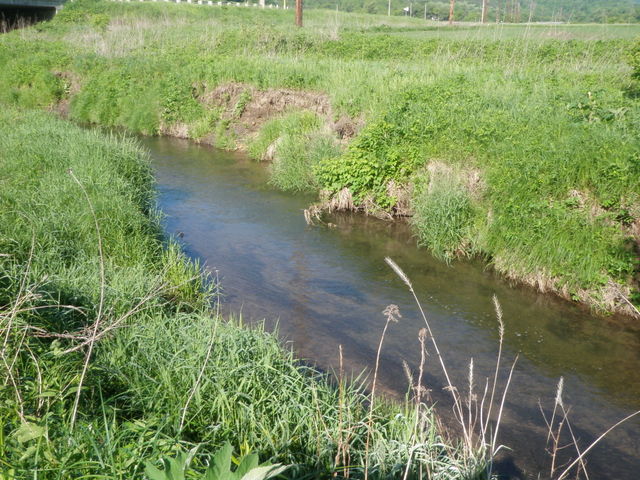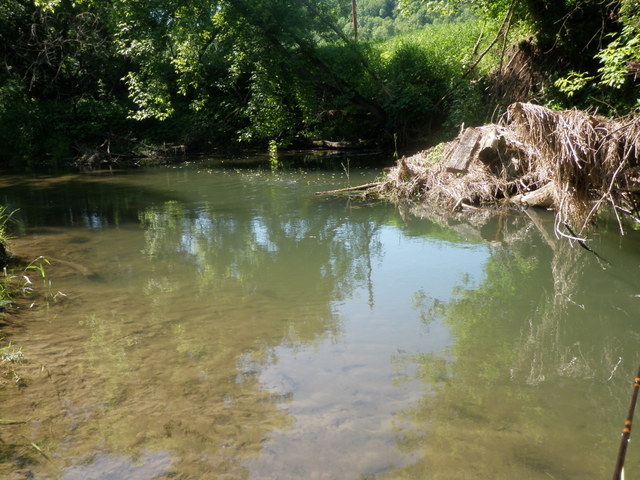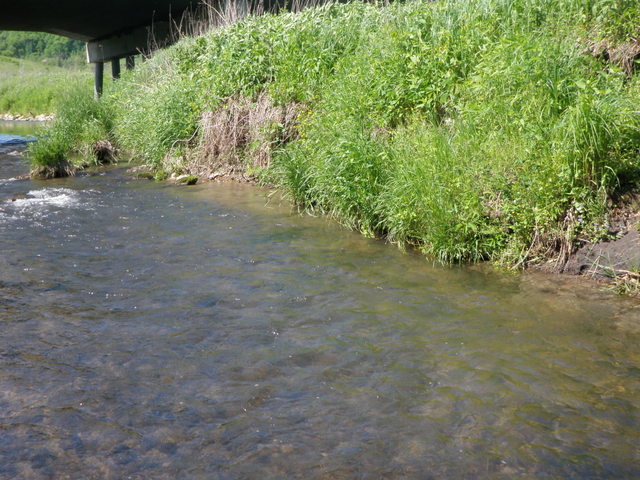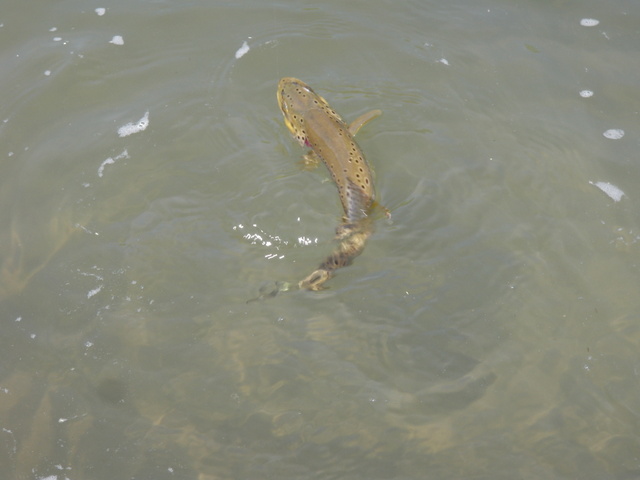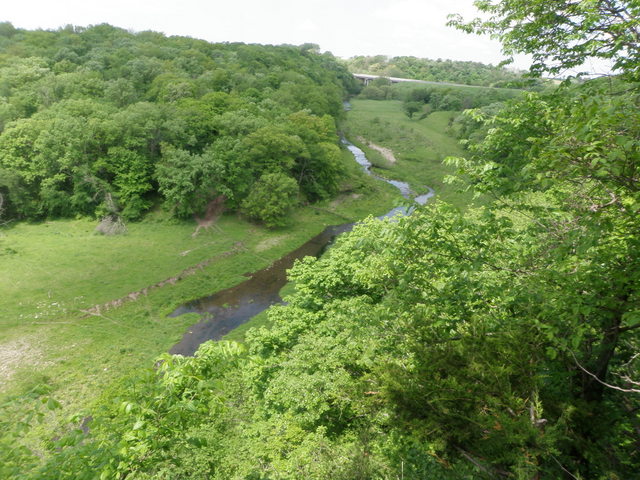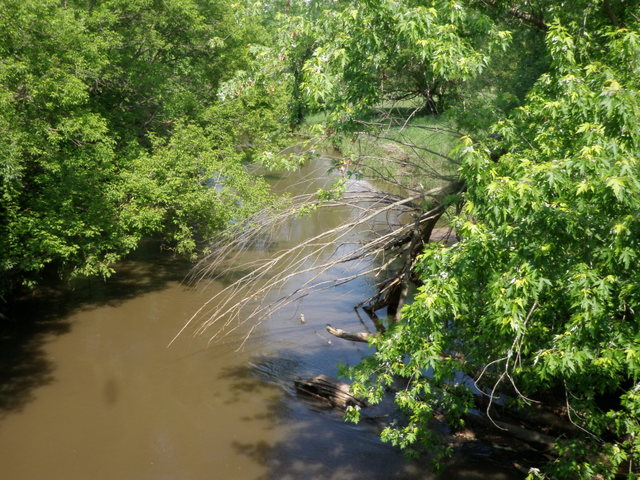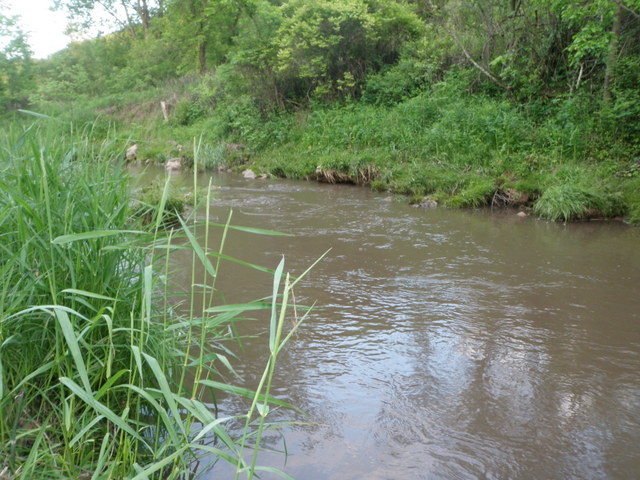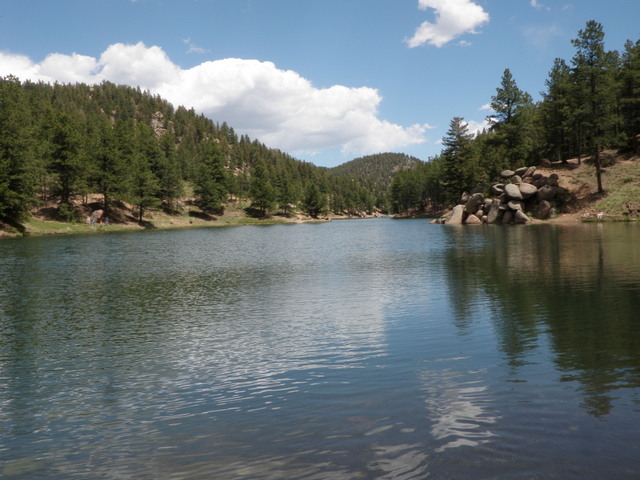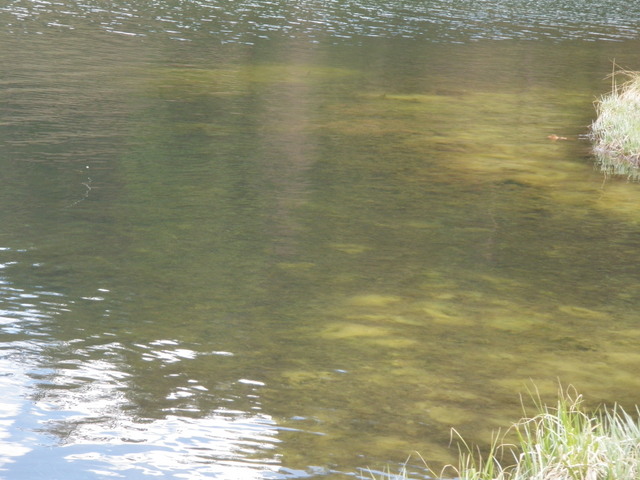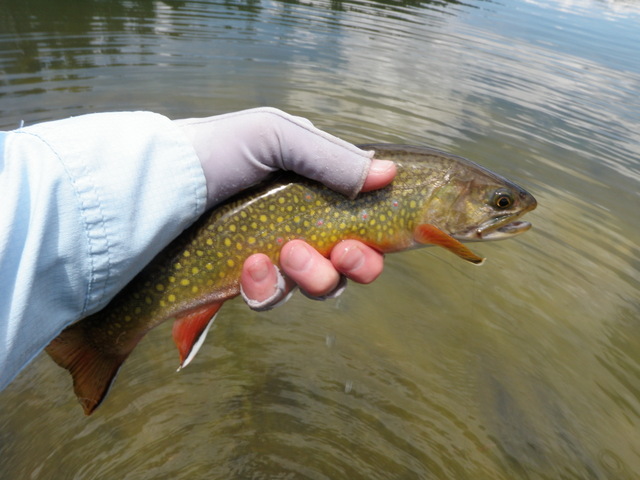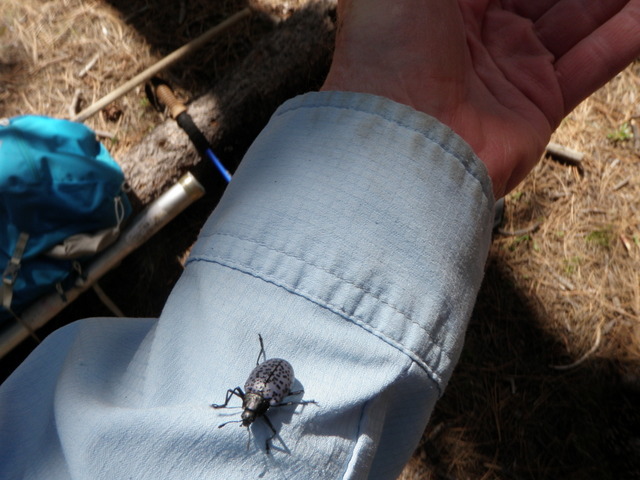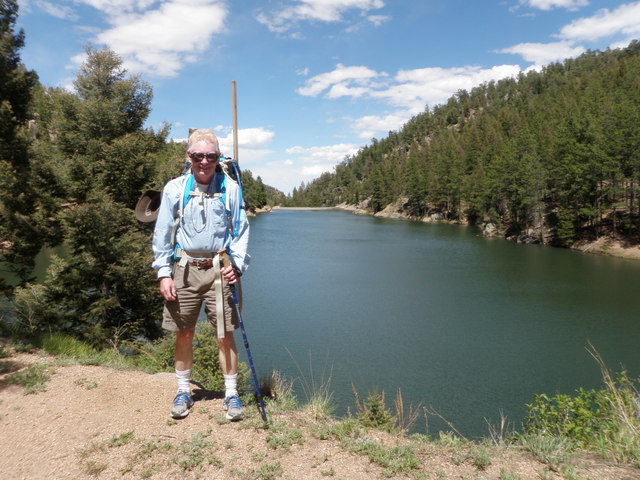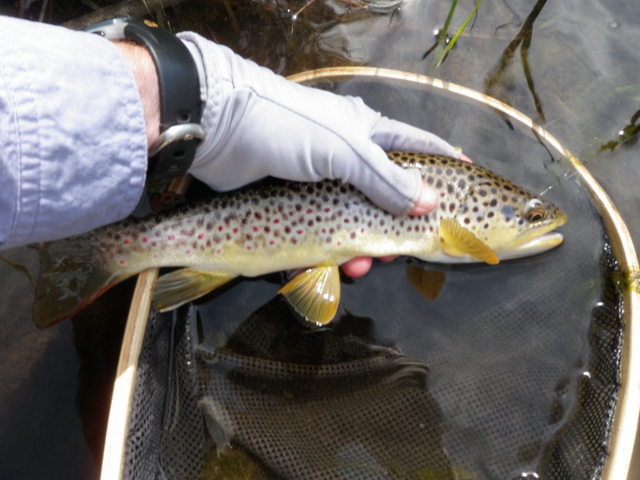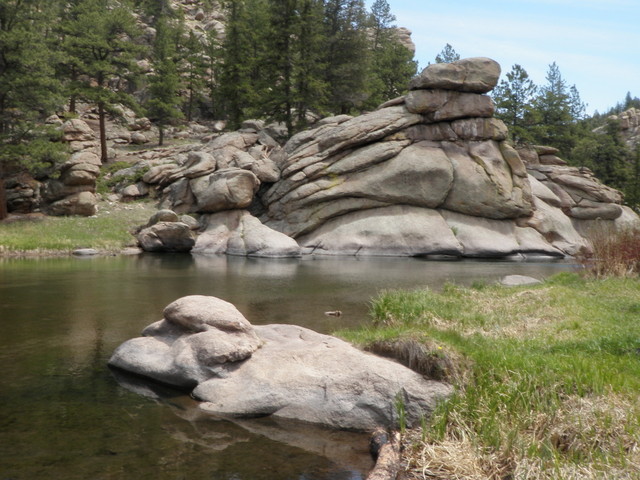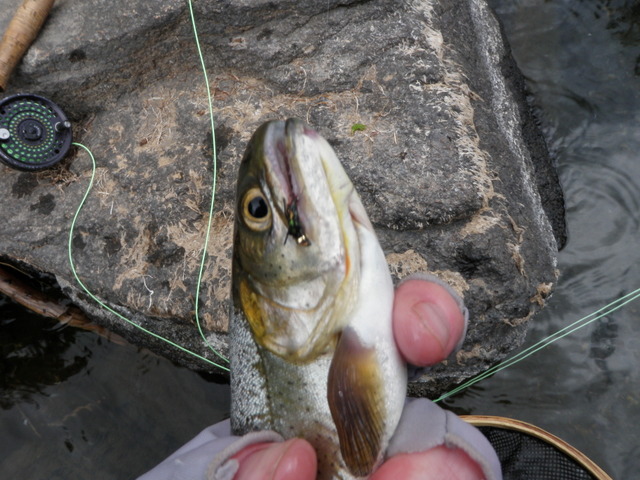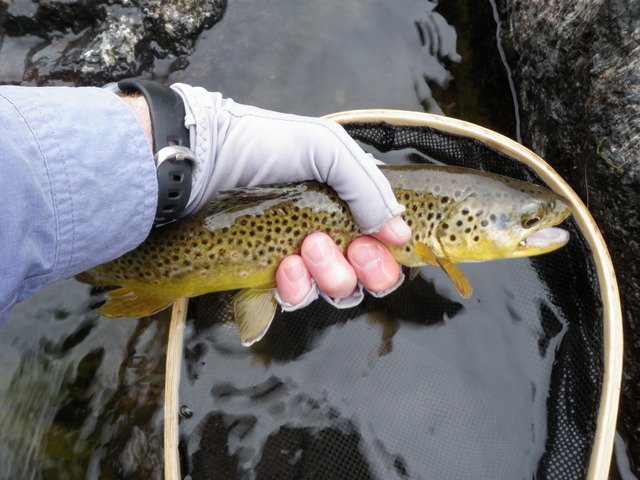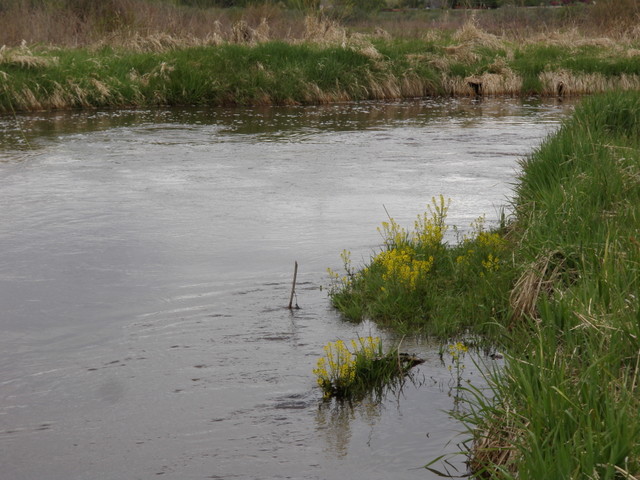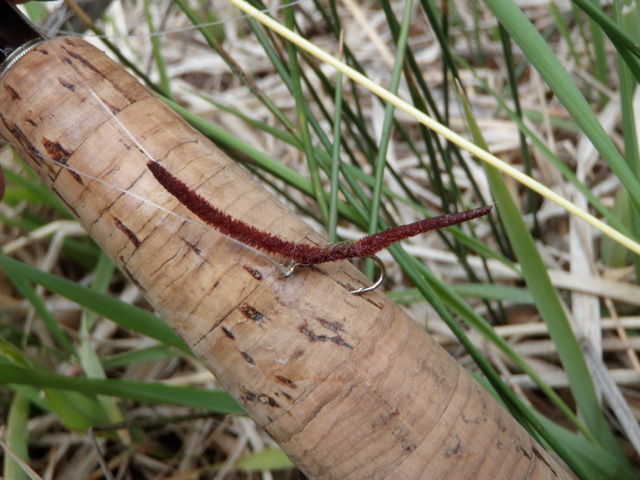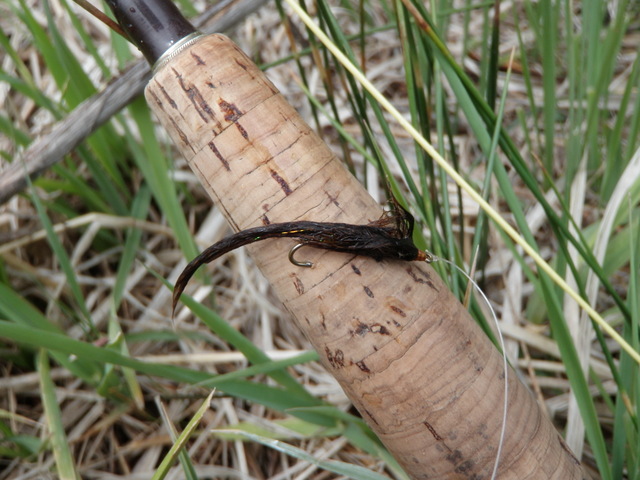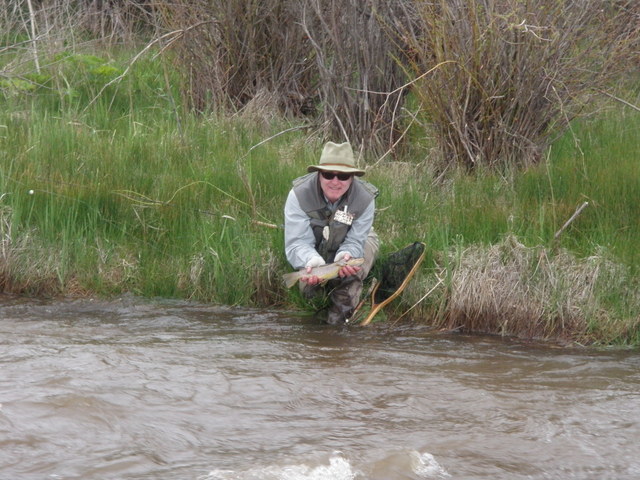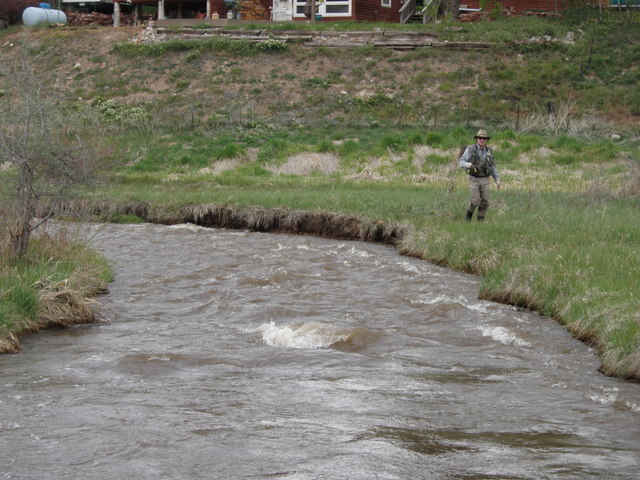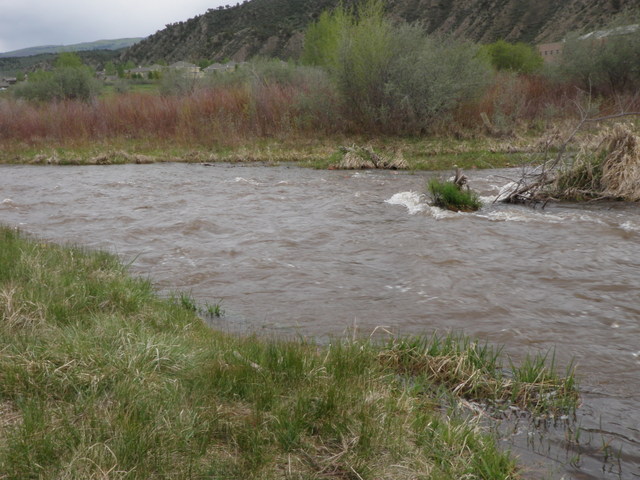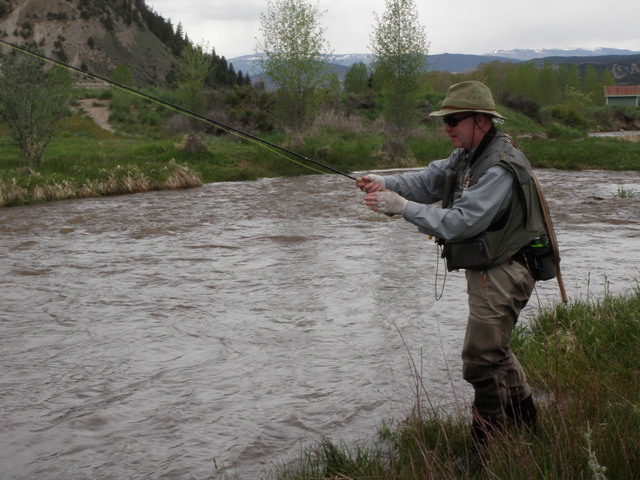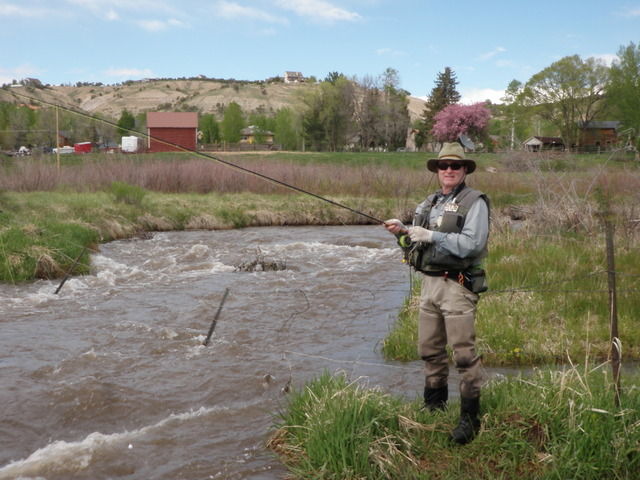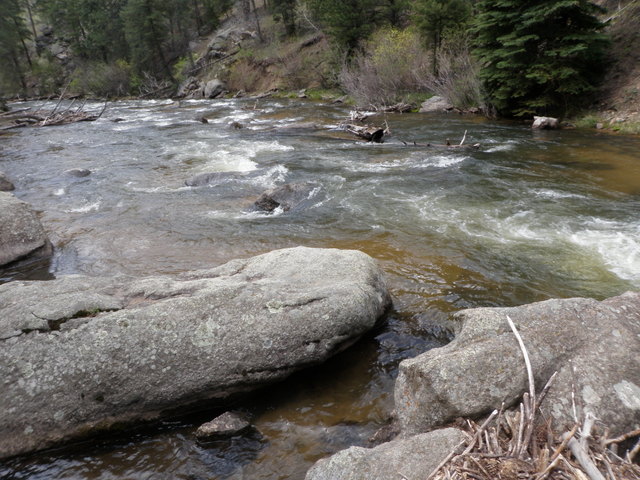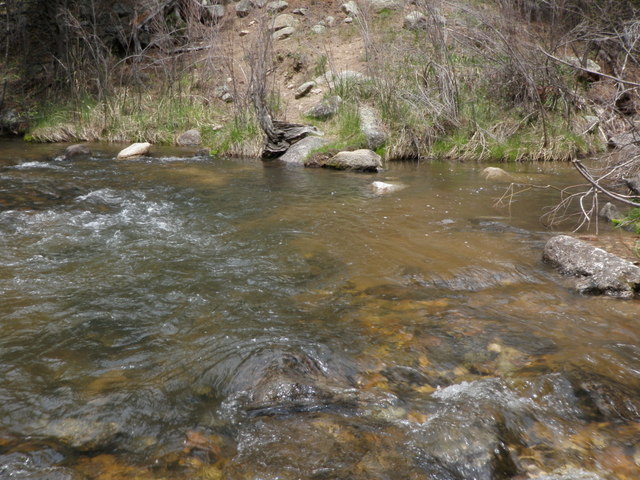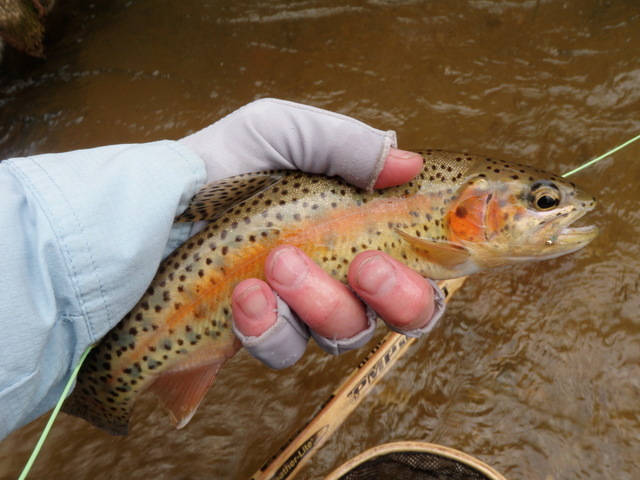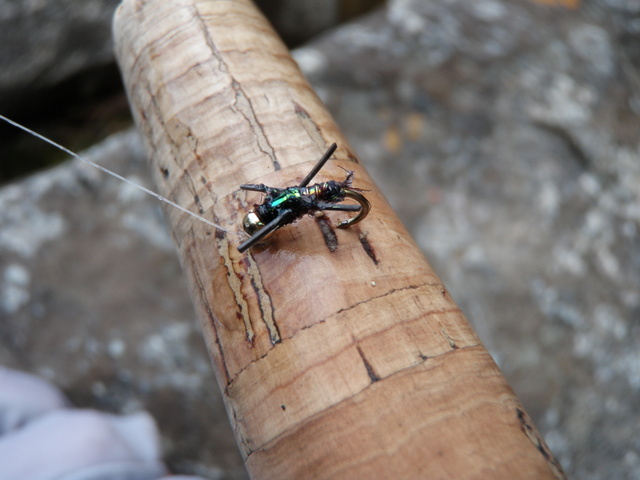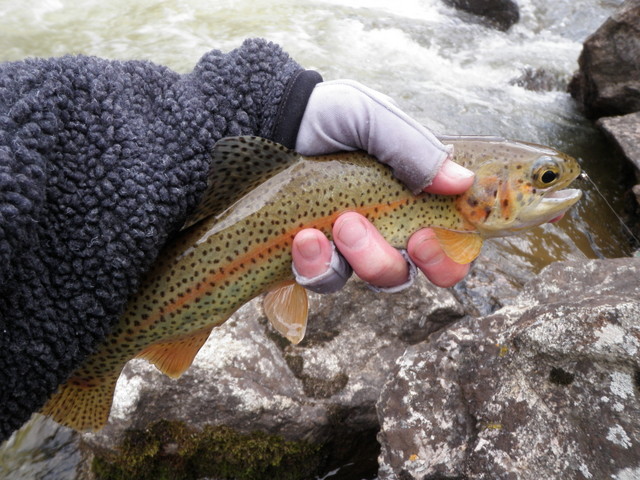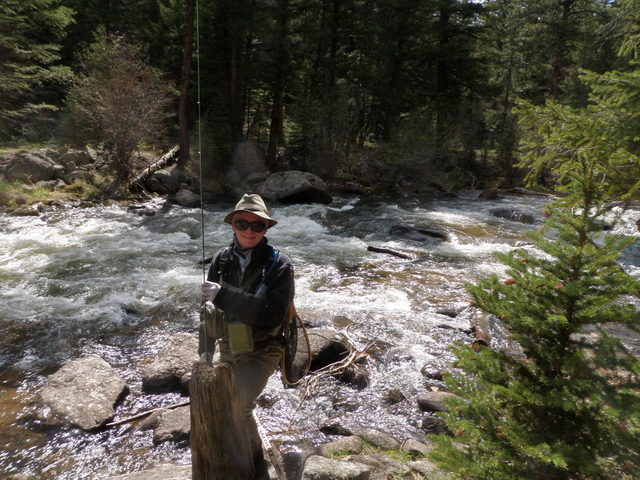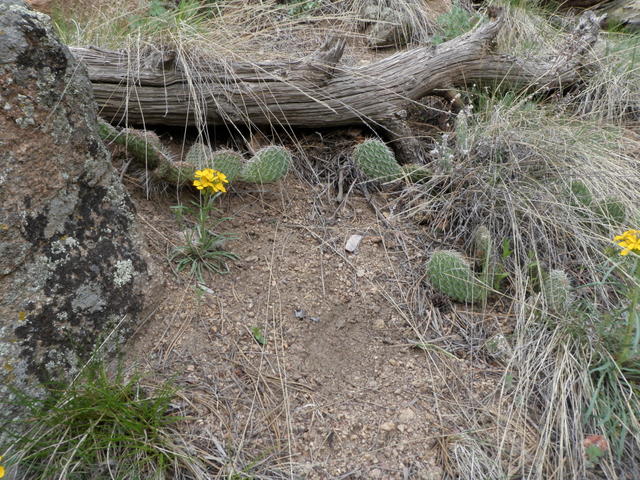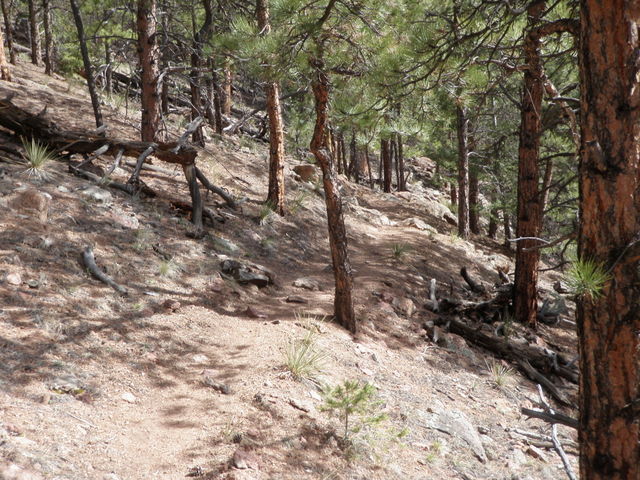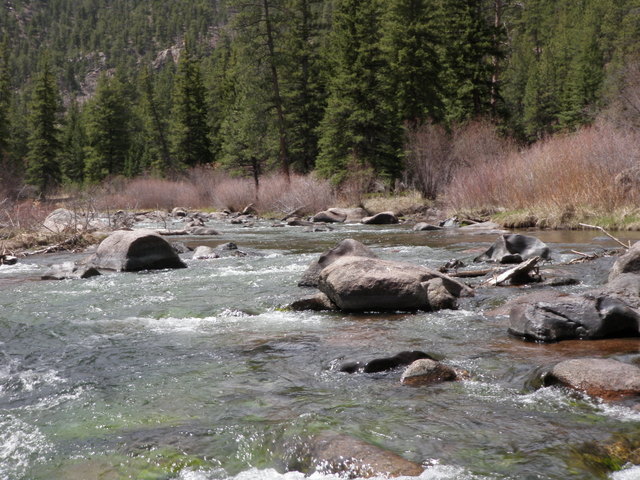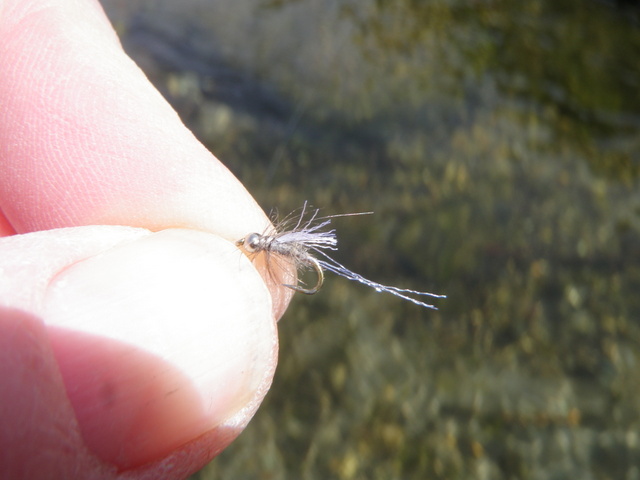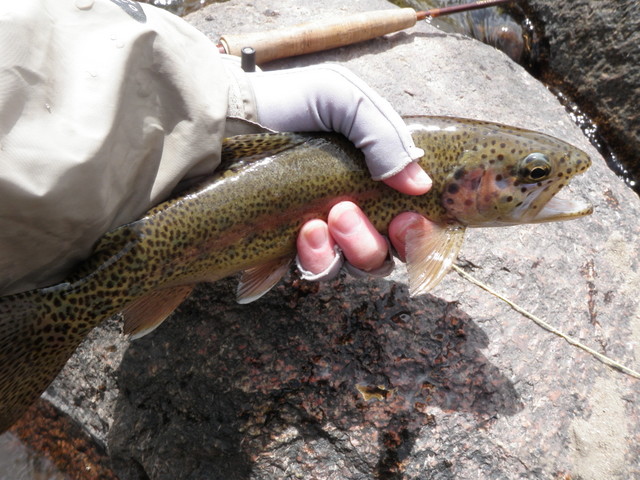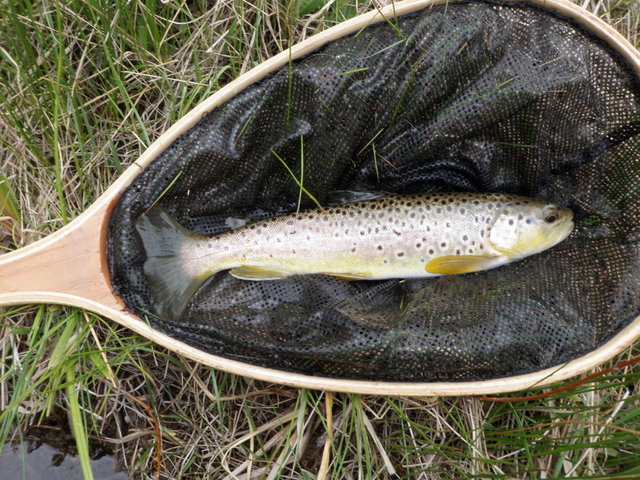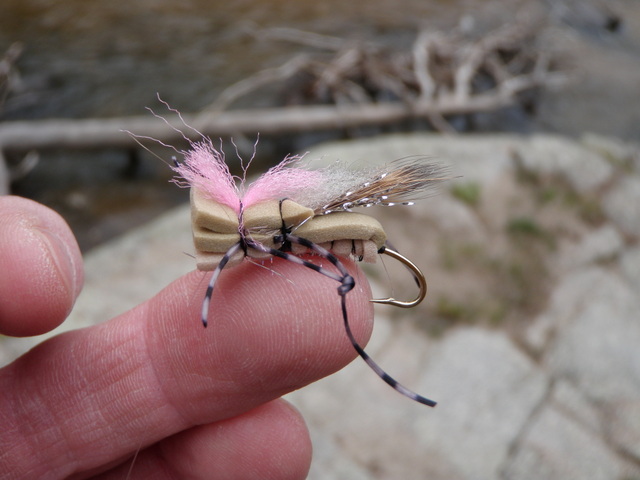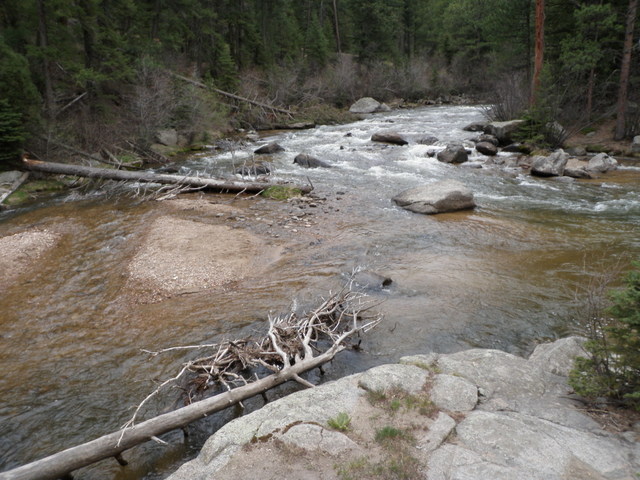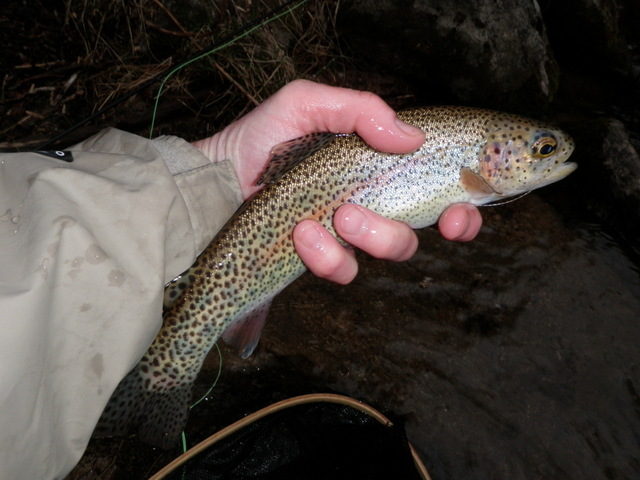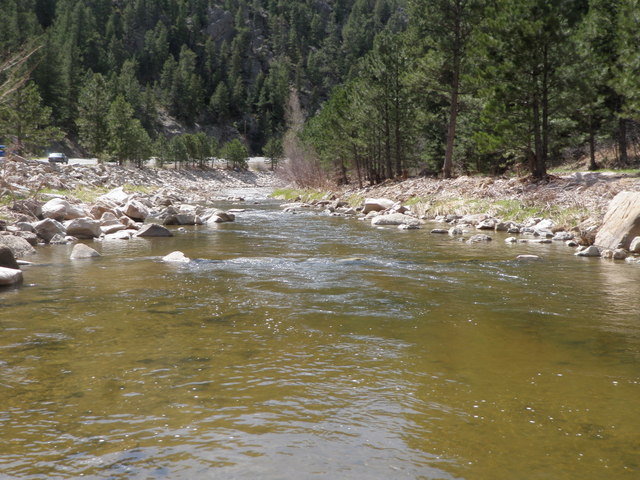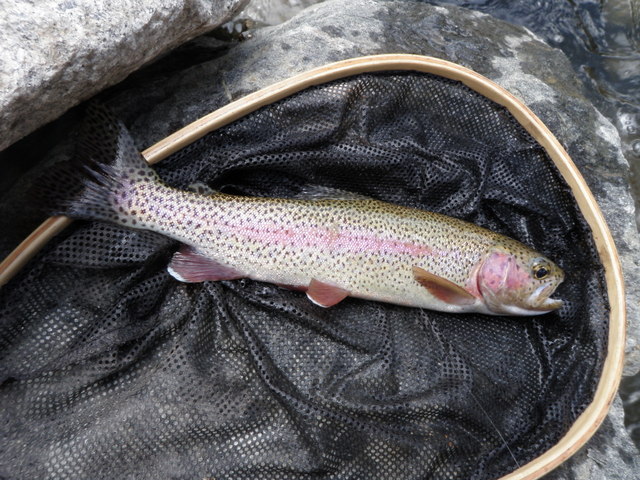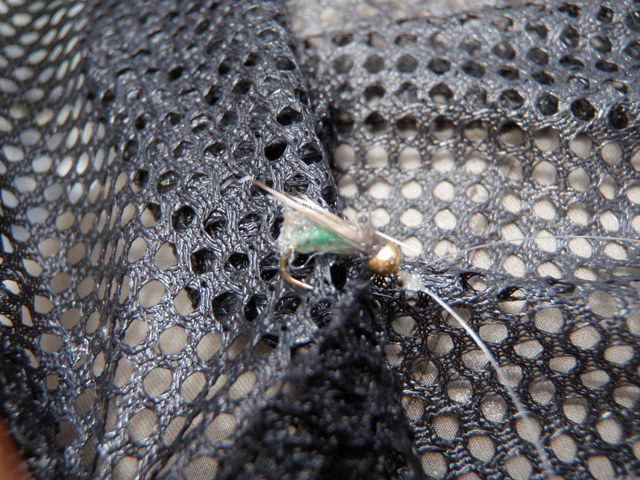Time: 9:00AM – 11:30AM
Location: Below bridge before Viola Park to 1/3 of the way between bridge and fence
Fish Landed: 12
Camp Creek 06/05/2014 Photo Album
As I gathered my gear on Thursday morning, my expectations were frankly quite low. While I was fishing on Wednesday evening, Jane wandered up the highway to the Viroqua Hills Golf Club and decided to rent clubs and play nine holes of golf while I fished. This was welcome news as I didn’t want Jane to be bored while I was exploring the Driftless Area fishing.
The first area that Danny recommended when we started exchanging emails was Camp Creek, and the fly shop highlighted this stream as well. Camp Creek was east of Viola and not too far from the Kickapoo River, and after viewing the clarity of the Kickapoo, I was somewhat concerned about the condition of Camp Creek. I was equally lacking information about the other streams on the map, so I decided to at least sample Danny’s favorite choice.
I made the drive on route 56 beyond the turn off to La Barge, WI and arrived in Viola. On the way I passed Bishop Creek and the Kickapoo River, and they remained quite murky although by now a lighter shade of brown. I was already reconciling myself to a morning of drifting dark colored nymphs and woolly buggers when I passed through Viola and reached the first bridge that spanned narrow Camp Creek. Did I really see what I thought I saw? When I glanced upstream through the car window as I went over the bridge, the water appeared to be crystal clear.What had I done to deserve this good fortune?
I continued .2 mile until I passed a ramshackle barn and mobile home and turned into Viola Park. Two vehicles arrived ahead of me, but one appeared to be associated with a tent camper. The other may have been a fisherman, so I decided to begin fishing back at the bridge that I had passed over assuming that another fisherman would walk directly behind the park and begin there. I sat in the grass and pulled on my waders and tied the laces on my wading boots and put together my Orvis Access four weight pack rod. I was now set and began walking back along the road until I reached the bridge where I gazed upstream and then down. I noticed some signs on a downstream tree that indicated the water was leased for the public, and I was attracted to this area despite the tight vegetation and large overhanging tree branches.
I decided to take the riskier path and whacked through some tall grasses until I reached the edge of the stream 25 yards below the bridge. I paused at this point to tie a Chernobyl ant to my line and then added a beadhead hares ear nymph as a dropper. I was now set, so I executed a roll cast upstream next to the weeds and grass on the opposite side of the narrow stream and immediately a fish rose and splashed the surface just short of the Chernobyl. I already experienced a refusal, and the water was in fact crystal clear!
I was intrigued by the water downstream as it appeared to be more difficult to fish than the open water above the bridge so I once again took a calculated risk and crossed the stream and began to hack through tall grasses. I continued downstream beyond several large bends until I found a spot where I could gradually work my way to the water, and here I resumed prospecting with the Chernobyl ant and hares ear. It wasn’t long before I experienced additional refusals to the foam attractor, but then I connected on a nine inch brown and paused to take a photograph. I worked my way upstream and landed a few more browns in the 9-11 inch range, but this was accompanied by some more refusals and some momentary hook ups. In short I was having a blast prospecting a small spring creek with a dry/dropper combination with enough action to hold my interest.
In this stretch of water with tight cover I worked through several very attractive deep pools at sharp bends in the stream, but much to my amazement these areas did not produce fish or even refusals. Eventually I reached the point where I had crossed below the bridge, and I began working back upstream. The water from my crossing point to 100 yards above the bridge was characterized by more velocity and a lack of deep pools and bends. I expected to cover this water type quickly, but what do I know? As things worked out, this became my most productive water of the morning. I discovered that the larger fish (11-12 inches) loved to hide under clumps of overhanging grass and vegetation. I cast the Chernobyl to the edge of the grass and as it swept by, the fish couldn’t resist snatching the trailing beadhead hares ear. I probably landed three or four nice browns using this approach.
Once I passed the faster water stretch, I encountered more of a pool and riffle mix similar to the area below the bridge but without the heavy canopy because I was moving through a large open pasture. I continued to use the dry/dropper technique, but I was forced to deliver many more casts per fish landed. Much to my surprise, the large slow moving deep pools did not yield fish and most of my action originated at the heads of the pool or where the faster water fanned out into the deeper water.
By 11:30AM I had landed twelve brown trout in the 9-12 inch range. The sun was high in the sky and beating down relentessly causing temperatures to rise into the 70’s, and the fishing action had slowed considerably. I told Jane to expect me back at the motel at around 12PM, so I called it quits and made a long return hike to the barbed wire fence that began in Viola Park.
Needless to say, I was feeling quite euphoric about the Driftless Area after spending 2.5 hours in a clear spring creek and landing 12 fine fish. The fish were not overly fussy, and I had the place to myself. My plans for Thursday evening were shifting back to a return visit to Camp Creek.

